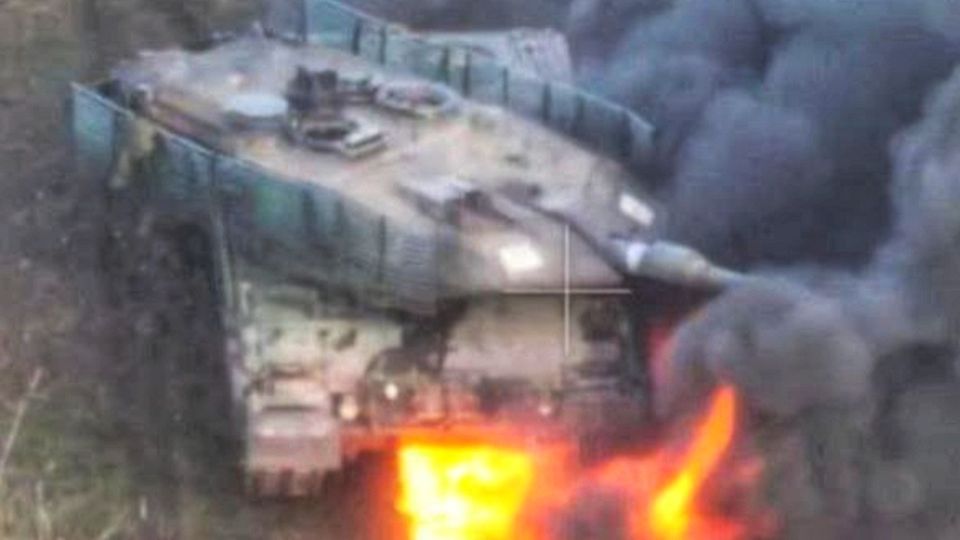War in Ukraine
Detonation drone no longer needs a radio signal – Ukraine tricks Russian signal interference
In the war in Ukraine, drones are used on both sides – and pose a great danger to even the heaviest equipment. (Symbolic image)
© Pond5 Images / Imago Images
The war in Ukraine is also a war of drones. Both the Russian invaders and Ukraine are trying to take out enemy equipment with cheap planes. Now Ukraine is reporting a breakthrough in weapons technology.
Although tanks, artillery, rockets and classic foot troops were used in the fighting in the While Ukraine obviously still plays an important role, cheap drones have emerged as an essential and highly effective weapon on both sides over the course of the war. Ukraine has now apparently found a way to use flying explosives even more effectively – which shows how indispensable the weapon has now become.
Ukraine uses countless drones
There are various reasons for this: Drones, especially home-made models, are comparatively cheap and available in large numbers. Their loss does not hurt and is not worthy of a headline, as is the case every time, for example, with the destruction of a Leopard 2 or A1 Abrams. They are simple disposable weapons that can be replaced in no time.
In addition, a drone attack, no matter how simple it may be, is technically difficult to repel. Air defense is of course capable of intercepting one or more drones, but in an offensive with large numbers, there is a huge chance that not all flying explosives can be prevented from making the planned impact. This poses major problems for the other side, Ukraine and Russia. For example, Ukraine is currently attacking Russian refineries – and is making high profits with little effort.
Last, but not least, a drone usually protects the lives of the users. The small aircraft can be controlled and used over long distances, which means that human life on the joysticks can remain far away from the combat zone and therefore does not become a victim as easily as is the case, for example, with tank troops or artillery positions, where in the event of shelling there is not only the possible loss Troops can always cause major material damage.
The Ukrainian front is full of jammers
The only thing a drone pilot needs is a radio signal, a clear view through the cameras and, ideally, GPS. Signal jamming is therefore considered the best means of warding off attacks so far. If the connection between the drone and the pilot is interrupted, the small quadrocopters fly aimlessly. The likelihood of them achieving their goal decreases rapidly. Until now.

The Ukrainian activist Serhiy Sternenko reports via X, formerly Twitter, that Ukraine has managed to equip the small planes with automatic, i.e. autonomous, target detection. As evidence, he published a video that is supposed to show an attack on a Russian tank that went according to the drone pilots’ interests despite radio signal interference – the tank was destroyed, they say. The drone managed to fly the last few meters to its destination independently without active control without being thrown off course due to the loss of signal.
The further development of the drone is “the joint work of the 60th and 63rd mechanized brigades,” he writes. Sternenko points out that the development is not yet complete. They still need to be improved, he explains. To achieve this, he uses the alleged destruction of the tank, which cannot be independently confirmed, as an advertisement to raise funds. According to the activist, the equivalent of 1.1 million euros would be needed.
He wants to build 1,300 such drones and further improve the technology, it goes on to say. He admits that it is not Ukraine’s first foray into autonomous drones, but it is one of “the first successful applications.”
Russia is also researching the use of autonomous drones that cannot be interfered with. Sternenko says that the Russians’ tests have been going on for “more than a month” and that they have to hurry up to keep the upper hand.
Russia uses long wires to control drones
A Russian drone was recently found in Ukraine equipped with a coil of wire. Ukrainian military expert Serhiy Flesh commented the find with the words: “We saw something we had never seen before. A Russian FPV drone flew towards a target with a 10 kilometer long spool of thin fiber optic cable. The cable was unwound in the air. We see a new technology for controlling FPV drones”.
Wired weapons are still considered the safest method of circumventing the enemy’s disruptive measures. The anti-tank guided missile of an M2 Bradley, for example, also relies on a wire to protect the missile’s maneuverability from interference until impact. They understandably left open what measures the Ukrainians have taken with their autonomous drones.





